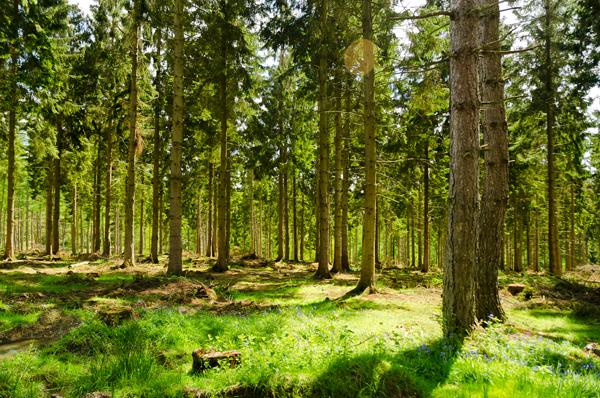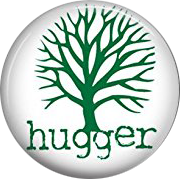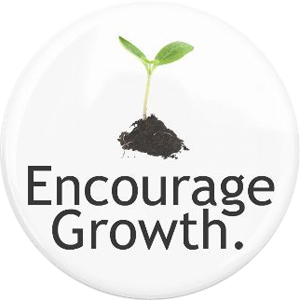
Here it is 2018, and before long there will be dirt on our hands again as we start another growing season. I am happy to announce that the catalogs are out and being delivered to area mailboxes. The local nurseries have seed packets (so many seeds from which to choose, so little space to cultivate). February is the earliest time to plant cool-season vegetables like cabbage, kale, kolrabi, lettuce, mustard, onions, English peas, snap peas, radishes and spinach. These require cool soil and cool air temperatures to germinate, grow and mature with maximum yield and quality. If you have ridges or hills in your gardenscape, plant there as the ridges warm faster than the level soil. It is a tricky time to move soil to make ridges, as wet soil can form clay sculptures. It would have been better to form the ridges in the fall. Spring-planted vegetables respond well to nitrogen side dressings.
As I’m flipping through the pages of the seed catalogs, I notice growth enhancers, soil builders and nutrients for enhanced production. I have used them all, as well as organic methods of building soils. Why? Simply, to get a high yield from my vegetables. I would love to have the problem of too much produce. I often think that I need to schedule a regular time to assist my garden each and everyday. Perhaps consistent monitoring and consistent care (like a child) will create better results. That is on this year’s to-do list.
Do I Need New Tools?
Tools have not changed much over the centuries. If you look at historic tools, you will find shovels, trowels, cultivators, hoes, disk harrows and plows. There are seeders. Dependent on the size of your garden, you may choose manual work, a human-powered machine or a motorized machine. The process is the same; it is the volume of cultivation that will help you decide. Finally, consider a good wheelbarrow.
Since I could not live for a year solely eating the produce in my garden, I continue to garden as a hobby, a diversion and a refuge from everyday chaos. The last thing I want in gardening and in my refuge is any type of hate. Plus, I think plants respond to love and caring, not abuse and neglect. I guess I am a gardening environmentalist, as I recognize the earth patterns and balanced ecosystems. I strive to have my piece of earth be in harmony with nature, giving and taking as a balanced life within my garden.
The word “environmentalist” is such a political label that it immediately conjures reactions on both sides of an issue. As with any emotional response, logic is thrown to the wind. So I hear supporters on both sides of an environmental issue sharing concerns, yet the vitriol is so thick that they do not hear each other. It is a very sad situation when divergent views cannot find a basis of communication to have an interesting discussion.
I ask this contentious question: “should gardeners be assumed to be environmentalists?” There are people who see working with nature in a garden or on a farm as different than being in and protecting nature as an ecologist or conservationist. From a computer search, the synonyms of an environmentalist that appear are conservationist, preservationist, ecologist and nature lover. Gardener and farmer are not seen on the list. On another computer search for a gardener, the synonyms are horticulturist, greenskeeper, garden caretaker, grower. Environmentalist isn’t there, either. By the synonym definitions supplied, the inference suggests those who grow vegetables, flowers and herbs can do so without the ecology of nature. Should it be assumed that a gardener is a nature lover, and probably a tree hugger? Can a conservationist support chemical enhancements for garden and farm production and insect control?
 As a general statement, conservationists care for trees. The Tennessee Environmental Council has shared that forests cover 14 million acres (52 percent) of the state. Threats from wildfires, insects, disease, improper management and urban expansion do threaten forests. Why should a gardener, a farmer and a citizen care other than to enjoy a walk in the woods?
As a general statement, conservationists care for trees. The Tennessee Environmental Council has shared that forests cover 14 million acres (52 percent) of the state. Threats from wildfires, insects, disease, improper management and urban expansion do threaten forests. Why should a gardener, a farmer and a citizen care other than to enjoy a walk in the woods?
Lawn Management
The shrubs and trees in your yard serve multiple purposes: shade, food and shelter for wildlife, water retention for vegetation, just for starters. The trees and shrubs put down deep roots which slow down the water runoff from rain and melting snow. The soil works as a filtration as the water passes through it. Obviously, gardens and farms need usable water.
If the moisture is not properly managed due to insufficient shrubs and trees on your land serving as water absorbers, the water runs off the land too quickly. Think of the devastation from clear cutting; the runoff overloads our streams and carries topsoil, debris and chemicals from the land over which it travels, creating polluted water and diminishing the quality of our soil for plant growth. The runoff knocks the affected ecosystems out of balance for optimum life support, both human and wild.
Mulch will assist the roots in keeping the moisture in the soil, slowing down erosion. The mycorrhizae fungi in the soil absorbs both water and nutrients from the soil and assists them back to the roots of the plants. They are a link between the roots and the soil and act as conductors or carriers of the nutrients within the soil. The nutritive quality of our foods can be directly traced to the nutritive quality of our soil. Mineral-rich soils contain trace elements that are traceable in the produce grown in that soil. Living organisms, humans included, need trace elements in their systems for proper functioning.
 Chemical Alteration
Chemical Alteration
Chemical-solution supporters separate the natural process from the applied one. The guidelines on the use of chemicals, if selected, must be diligently followed. Just read any label. Always read the labels of any fertilizer, weed killer, etc that you apply to your property, gardens included. More is not better.
There are lands that have received chemical treatments since the ’40s. From the beginning, advocates for both sides have explained two different camps of thought: chemical alteration and enhancement versus natural selection and life cycling. The result of trusting chemical applications alone instead of using a natural process changes the soil structure and constituents within the soil first. As a result of the chemical application and misapplication, the quality of the food produced from that soil is affected. The extrapolation of minerals and trace elements from that soil is dependent on the soil having the elements to extract into the growing plants and produce. The next logical focus is on the quality of the soil in which you have food growing.
As you think and decide on the vegetables and fruits to be grown in your yard or on your patio this year, also consider supporting the soil in which they are grown. The soil is our friend and part of our support system. It freely shares what it has for the benefit of those who help support it.
Mark you calendars for some winter inspiration through local garden shows. The Nashville Garden Show is scheduled at the Fairgrounds on March 1–4. The Boro Garden Show and Party will be held April 6 and 7 at the Lane Agri-Park Community Building on John R. Rice Blvd in Murfreesboro.













